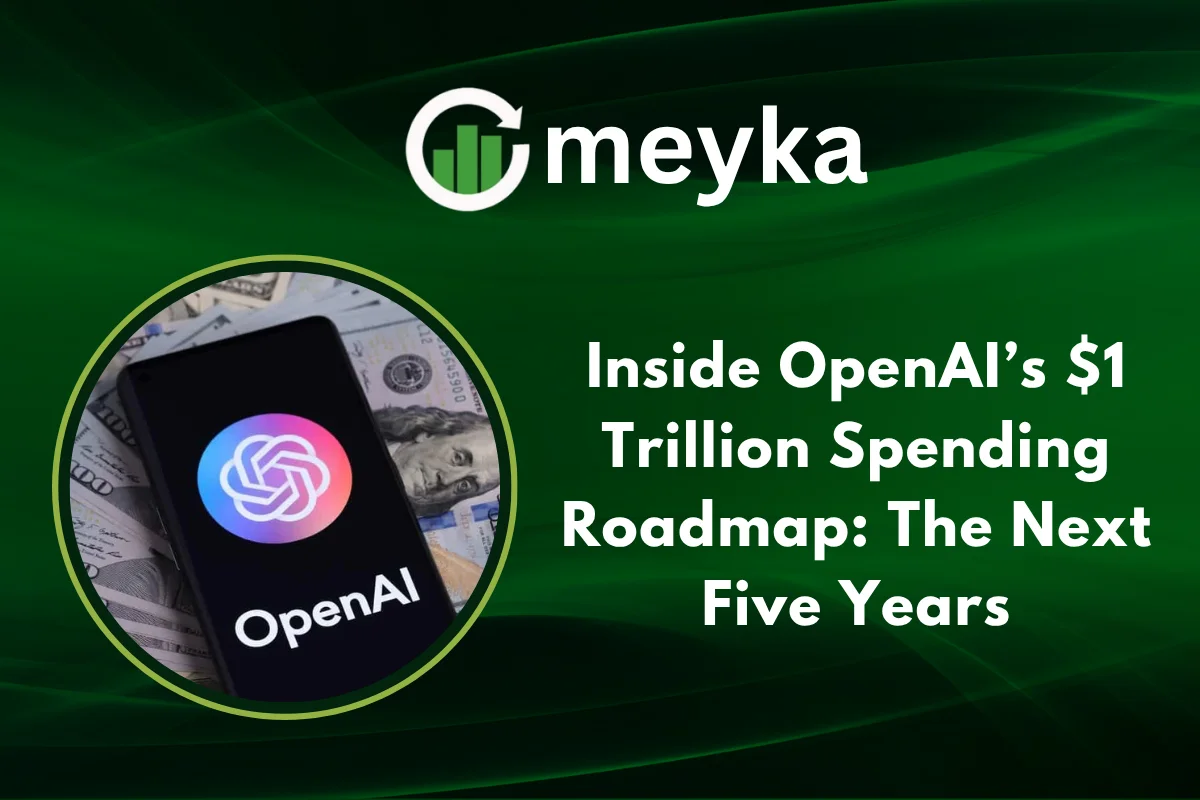Inside OpenAI’s $1 Trillion Spending Roadmap: The Next Five Years
The artificial intelligence revolution is moving faster than ever, and OpenAI is right at the center of it. With its ambitious $1 trillion investment roadmap, the company is preparing for a massive leap in AI capability, innovation, and global expansion. Over the next five years, OpenAI’s financial strategy could redefine how AI shapes the global economy, impacts AI stocks, and transforms the future of technology.
OpenAI’s Grand Vision for the Future
At its core, OpenAI’s goal is to develop artificial general intelligence (AGI), systems capable of performing any cognitive task that humans can. But achieving this requires unprecedented investment. A trillion-dollar roadmap signals not just growth but dominance across AI infrastructure, research, safety, and commercialization.
OpenAI’s partnership with Microsoft, valued at tens of billions, is just the beginning. The next phase could involve new alliances with chipmakers, data center builders, and global tech ecosystems. As AI continues to drive productivity and innovation, OpenAI’s spending plan could become a cornerstone of the stock market’s AI boom.
Building the AI Backbone: Compute and Infrastructure
A large part of OpenAI’s trillion-dollar plan will go toward hardware infrastructure, the very foundation of modern AI. Training and deploying massive models like GPT-5 and GPT-6 requires powerful supercomputers and advanced chips.
We can expect OpenAI to:
- Invest heavily in AI supercomputers powered by NVIDIA and custom chips.
- Develop new data centers worldwide, supported by renewable energy.
- Explore AI-optimized networks that reduce training time and energy costs.
This infrastructure spending will not only accelerate OpenAI’s innovation but could also benefit public companies that support the AI supply chain, such as Microsoft (NASDAQ: MSFT) and NVIDIA (NASDAQ: NVDA), both key players in the AI market.
Massive R&D to Drive Next-Gen AI Models
OpenAI’s R&D spending will likely be one of the biggest parts of its roadmap. The company plans to create smarter, more efficient, and safer AI systems capable of reasoning, planning, and creativity.
Research may include:
- Advanced training architectures like multimodal and reinforcement learning systems.
- Autonomous agents that perform complex workflows with minimal human guidance.
- Specialized AI for industries such as healthcare, finance, and robotics.
This focus on deep research helps OpenAI stay ahead of rivals like Google DeepMind and Anthropic, both of which are aggressively expanding their AI capabilities.
Ensuring AI Safety and Global Alignment
With greater power comes greater responsibility. OpenAI understands that AGI development requires robust safety measures. That’s why part of the $1 trillion roadmap will go toward:
- AI alignment research to ensure ethical decision-making.
- Collaborations with regulators and governments to develop safety standards.
- Red-teaming programs to identify risks and prevent misuse.
OpenAI’s safety division works closely with global organizations to make sure AI systems are transparent, fair, and accountable. You can explore their approach to safety directly on OpenAI’s official site.
Partnerships, Mergers, and Ecosystem Growth
To accelerate growth, OpenAI will likely expand through strategic partnerships and acquisitions. The roadmap could include investments in smaller startups specializing in robotics, AI hardware, or specialized data analytics.
These partnerships will help OpenAI reach new markets and build an ecosystem around its technology. Companies that align with OpenAI’s tools, like developers integrating the ChatGPT API, could experience exponential growth in the next five years.
This broader ecosystem approach can influence AI stock valuations and push investors to look beyond traditional tech giants when conducting stock research in the AI sector.
From Innovation to Commercial Impact
Beyond research, OpenAI is focusing on commercial scalability. Its products, such as ChatGPT Enterprise, DALL·E, and Codex, already have millions of users. Future investments may expand these offerings into new domains like:
- AI-powered education platforms
- Enterprise workflow automation
- Healthcare data analytics
- AI-driven customer experience solutions
Each of these applications can generate recurring revenue streams, creating a sustainable business model that justifies trillion-dollar spending.
Global Expansion and Localization
OpenAI’s roadmap is not limited to Silicon Valley. The company is eyeing global expansion to bring AI to emerging economies, governments, and enterprises worldwide. Over the next few years, we can expect:
- Regional AI hubs in Europe, Asia, and Africa.
- Localized models that understand languages, cultures, and regulations.
- Partnerships with local universities and governments to advance responsible AI use.
This strategy positions OpenAI not just as a U.S.-based powerhouse but as a truly global AI institution influencing education, business, and governance worldwide.
Human Capital: The Core of Innovation
Even the most advanced models need the right minds behind them. OpenAI’s spending roadmap includes major investments in human talent:
- Recruiting world-class AI engineers and researchers.
- Offering scholarships and training programs for the next generation of AI professionals.
- Building a diverse workforce to bring creativity and inclusiveness to AI design.
By attracting the best talent, OpenAI ensures its position as a leader in innovation while maintaining ethical and diverse perspectives on AI development.
Financial Outlook: Implications for AI Stocks
From an investor’s perspective, OpenAI’s trillion-dollar strategy could reshape the AI stock market. While OpenAI remains private, its ecosystem impacts public companies that collaborate with it. Microsoft, for instance, has already seen substantial returns on its OpenAI investment through the integration of AI in Microsoft Copilot and Azure AI.
Investors tracking AI stocks should monitor companies involved in:
- Chip manufacturing (NVIDIA, AMD)
- Cloud infrastructure (Microsoft, Amazon)
- AI software integration (Salesforce, Adobe)
These firms are the indirect beneficiaries of OpenAI’s expansion and could experience long-term growth as global AI adoption accelerates.
Challenges and Future Uncertainties
Despite its ambitions, OpenAI’s trillion-dollar roadmap faces significant hurdles:
- Regulatory pressures from the U.S. and Europe regarding data privacy and AI safety.
- Rising computer costs as training demands grow exponentially.
- Competition from other labs pursuing AGI independently.
To mitigate these risks, OpenAI must maintain transparency, strengthen alliances, and focus on sustainable growth strategies.
Conclusion
OpenAI’s $1 trillion roadmap represents a defining chapter in the history of artificial intelligence. Over the next five years, this massive investment will reshape industries, generate new business models, and expand the global reach of AI. Whether you are an investor tracking AI stocks, a developer building with OpenAI tools, or simply an observer of technology’s next frontier, this journey is one to watch closely.
OpenAI’s vision isn’t just about technology. It’s about building the infrastructure of the future, where machines and humans collaborate to solve the world’s biggest challenges. The next five years will determine how far and how responsibly we can go.
FAQs
The company is expected to combine partnerships, private capital, and revenue from its existing AI platforms like ChatGPT Enterprise and API licensing. It may also attract institutional investments.
Its roadmap is likely to drive growth in AI-related sectors, especially AI infrastructure, chipmakers, and cloud service providers, impacting both direct and indirect AI stocks.
Key risks include regulatory restrictions, infrastructure costs, and competition from rival AI labs. However, OpenAI’s focus on safety and transparency aims to mitigate these concerns.
Disclaimer:
This content is made for learning only. It is not meant to give financial advice. Always check the facts yourself. Financial decisions need detailed research.






